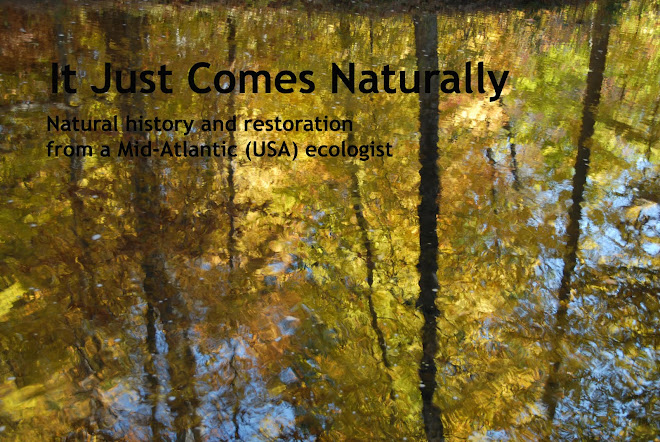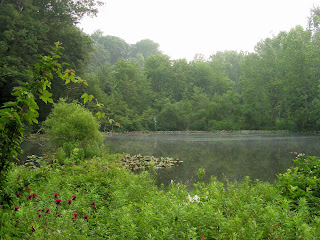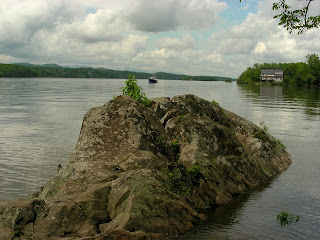Sunrise, crossing a meadow en route to the census tract
This morning I completed the last of eight censuses of the birds breeding in the largest woodland in my preserve. This marks the end of the 17th season I've walked through the woods, stopping for ten minutes at each of 19 stations, watching and (mostly) listening for birds. As the breeding season progresses, the birds generally become increasingly subdued, and that was certainly the case today--except for the ever-raucous Gray Catbirds.
Overnight haze yet to burn off the pond at Crossroads Marsh, en route to census tract
Dawn's haze lingers over the creek as well
Black cohosh, or bugbane (Cimicifuga racemosa) blooming in a woodland gap
A tuliptree embraces a boulder of gneiss...
...and sends its branches into the canopy
The breeding bird census trail, opened by yours truly with hand clippers,
and kept open by the passage of countless deer hooves
The breeding bird census woods, mostly mature tuliptrees and white ashes
Three stately tuliptrees; despite appearances, the furthest in the distance is actually the largest
A red maple barely hanging on; the right side is still alive,
while the left provides haven for woodpeckers
Breeding bird census gridpoint B-13
Trail blocked by a fallen tuliptree
Each spring when I return to complete another year's census,
I'm surprised to find that new trees have fallen across the trail over the winter
Bark of a mature tuliptree
Widowmaker at gridpoint B-9
Bright yellow fungus on a rotting log
Mossy tuliptree buttress at gridpoint B-7
A cadre of volunteers or sprouts hoping to take the place of a fallen comrade
A spring run naturally blocked by woody debris
Based on footprints in mud, the pool provides water for birds, deer, racoons and,
today, for a frog, who squeaked as it sought cover
The trail and woods uphill from the spring run pool
Spicebushes are loaded with berries this year
Migratory (and resident) birds will eat well come autumn
A robin's nest in a multiflora rosebush immediately above the census trail
The nest was occupied when I began the census in May, but the mother abandoned it
(with one egg) after I repeatedly walked through her territory.
By today, even the egg was gone.
















































